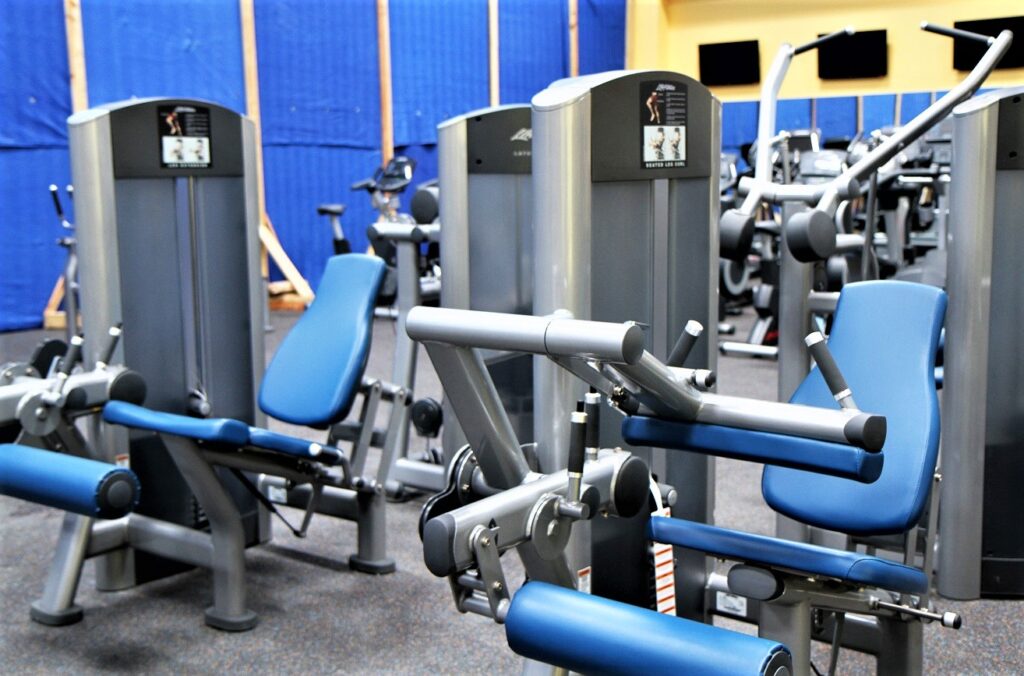Rest-pause is an excellent training technique, and yet it’s frequently overlooked. Too many advanced weight-trainers fail to include it in their workout arsenal. Maybe that’s due to bad branding. The name’s redundancy is confusing. Rest and pause? And it sounds like a euphemism for a catnap instead of a way to extend sets beyond failure. It certainly lacks the pizazz of supersets. Imagine if what we call rest-pause was instead known as a power pause or super-rest.
Rest-pause is often associated with high-intensity training (HIT). It’s another step up the HIT ladder in Mike Mentzer’s Heavy Duty system, and it’s a key component of Doggcrapp training. However, you don’t have to be a HIT man to benefit from rest-pause. Like supersets and forced reps, any advanced trainer can use rest-pause as a means of pushing sets beyond full-rep failure.
Let’s explore the rest-pause set.
HOW TO DO REST-PAUSE
Rest-pause goes like this.
◼️ Initial set. Let’s say you reach failure on a set of lying leg curls at 8 reps.
◼️ Rest-pause. Then, while lying on the bench with the weight stack down and no tension on your hamstrings, you wait 15 seconds and go again. This time, because you’ve only recovered some of your strength with such a short rest, you reach failure at 3 reps.
◼️ Rest-pause. You again rest for 15 seconds. You go again and reach failure at 2 reps.
◼️ Rest-pause. Rest 15 seconds. Go again. 1 rep.
◼️ Rest-pause. Rest 15 seconds. Go again. 1 rep. Stop, finally.
So, as you can see, your 8-rep set became a 15-rep set. Rest-pause has not only allowed you to eke out 7 extra reps, but those extra reps were all at near-failure. Instead of one failure point (at 8 reps), you’ve had four (at 8, 11, 13, 14, and 15 reps), meaning you’ve extended your set by racking up the sort of reps that best stimulate muscle growth and strength gains. That’s the logic behind a rest-pause set.
The numbers above are just an example. You might do 10-4-2 or 6-3-1-1 or some other subset sequence. The important thing is to rest shortly after reaching failure, recovering only some of your strength, and then go again, until you reach failure. Repeat.
Because the brief rests don’t allow full strength recovery, subsequent subsets will have fewer reps than the original subset, and they’ll get even shorter as you continue without adequate rest again and again. Some high-intensity trainers like to push rest-pause until their last subset is 0, meaning they cannot even get that one extra rep.
High-intensity trainer Mike Mentzer had another way of doing rest-pause: 4-6 max single reps with a rest of 10-15 seconds between each rep and a 20% reduction of weight near the end in order to get that last rep or two. This very low-rep scheme is essentially a series of all-out single reps. Yes, it’s very intense!

Rest-pause sets can be performed with most resistance exercises as long as you can easily and safely pause the action by re-racking or resting the weight(s). Racking and un-racking a weight can drain strength and energy you need for the next subset. For this reason, the best rest-pause exercises are ones that require no re-racking (pulldowns, for example) or can easily be re-racked (Smith machine shoulder presses, for example).
You also want to choose exercises you can effectively push to failure multiple times with full, strict reps. These are usually bilateral exercises (two-arm or two-leg) and not unilateral (one-arm or one-leg). So, for example, do barbell preacher curls (two arms) instead of dumbbell concentration curls (one arm).
THE SCIENCE OF REST-PAUSE
In recent years, the effectiveness of rest-pause has been researched. A six-week study compared strength, hypertrophy (muscle growth), and muscular endurance between rest-pause training and traditional training. The study concluded: “Resistance training performed with the rest-pause method resulted in similar gains in muscle strength as traditional multiple-set training. However, the rest-pause method resulted in greater gains in localized muscular endurance and hypertrophy for the thigh musculature.”
An eight-week study focused on the squat and concluded: “Our findings suggest that rest-pause promotes slightly superior strength-related improvements compared with traditional resistance training, but hypertrophic adaptations are similar between conditions.”
So, two studies with different conclusions, but both favor rest-pause either for growth (first study) or strength (second study). Only the first study looked at muscular endurance and saw an advantage in rest-pause over straight sets.
Exercise scientist Brad Schoenfeld, PhD, has suggested rest-pause may be more important for more experienced lifters. This makes sense, as it is certainly an advanced and intense technique, and a great way to, at least temporarily, break strength barriers and recharge workouts.
It’s also a way of doing more total volume in less time. For example, you could do two rest-pause sets of 15 reps (30 total reps), like the leg curl example above, in less time than you could do three traditional sets each ending at failure at 8 reps (24 total reps). In this regard, it’s no surprise why rest-pause boosts muscular endurance. More reps at near failure will do that, even if strength and growth gains are equal to or only modestly better than straight sets.

REST-PAUSE AND CLUSTER SETS
Cluster sets differ from rest-pause because cluster sets only have one failure point (the last rep). With cluster sets you might start with an exercise with which you can do 10 reps, and divide your set into three cluster sets: 5 reps, 4 reps, and 4 reps, with 15 seconds rest between subsets. So, you do 13 reps instead of 10, but you only go to failure on the 13th rep.
With rest-pause you go to failure at 10, then you might, after 15 seconds, go to failure at 4 reps, rest 15 seconds, go to failure at 3 reps, rest 15 seconds, go to failure at 2 reps, rest 15 seconds, go to failure at 1 rep. So, with this rest-pause set example, you do 20 total reps with 5 failure points. Rest-pause is not necessarily superior to cluster sets, or traditional sets, for that matter. They all work. But rest-pause is the most intense, and is therefore a technique we recommend to only advanced trainers.
REST-PAUSE SET BASICS
◼️ Go to full-rep failure. Rest 15-20 seconds. Go to failure again. Rest 15-20 seconds and go to failure again. In this manner, there are typically 2-4 additional rest-pause subsets after the initial subset.
◼️ Because of the intra-set breaks, rest-pause allows you to get more total reps at near-failure than traditional sets or cluster sets.
◼️ Rest-pause may help you overcome strength plateaus.
◼️ Rest-pause can also shorten your workout, allowing you to do more reps in less time than a workout of only traditional sets.
REST-PAUSE SET TRAINING TIPS
◼️ Push each subset to failure or near-failure.
◼️ Set the weight down or re-rack it at the end of each subset, but remain prepared to go again soon.
◼️ Select exercises for rest-pause in which you can easily set the weight down during the pauses. We also recommend bilateral exercises.
◼️ Rest-pause subsets after the first should be no more than 4 reps. If you can get 5 reps, shorten the rest periods to 10 seconds.
◼️ Rest-pause is an advanced intensity technique, and is not appropriate for trainers with less than one year of workout experience.
FURTHER READING
For more on extending sets beyond failure, check out:
Cluster Sets: Complete Training Guide (This includes how to combine rest-pause sets and cluster sets.)
















































